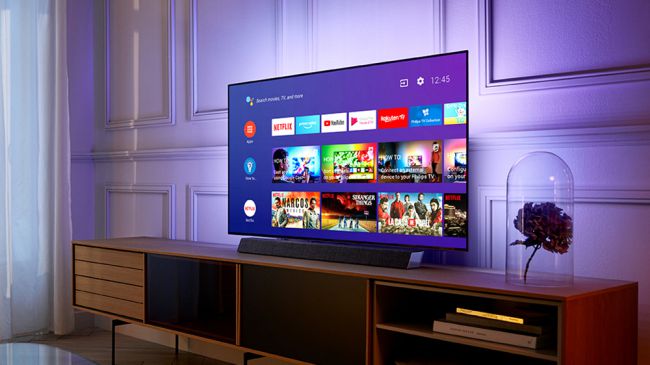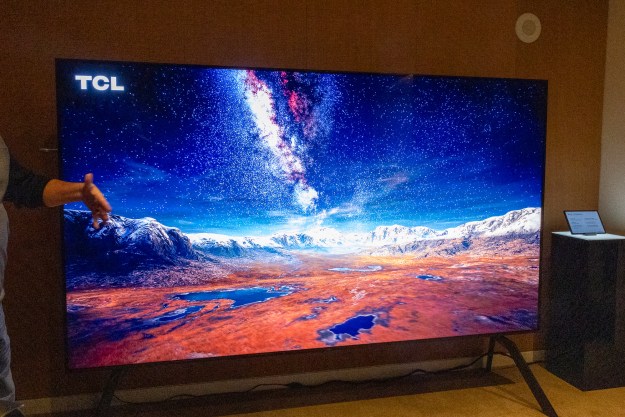Meet the Philips Ambilight OLED+934 and Ambilight OLED+984, the latest OLED 4K TVs to roll off Philips’ production line. Developed in partnership with Bowers & Wilkins and showcased on September 5 ahead of IFA 2019, both models feature a sound system like no other television we’ve seen to date, eliminating the need to fork out for a surround-sound setup.
Both the Philips Ambilight OLED+934 and Ambilight OLED+984 come equipped with the third-generation of Philips’ P5 Processing Engine, which is said to offer several advantages, including improved noise reduction, superior sharpness, and better contrast and color accuracy, resulting in a clearer HDR viewing experience for Dolby Vision, HDR10, and HDR10+.

Philips says that its P5 Processing Engine has been tweaked to operate at a higher bit resolution to improve dark detail, adding that several of its software features — such as Detail Enhancer and Perfect Natural Reality — have also been rebuilt to produce a sharper, more accurate, high-contrast image. Just how well the changes work, however, remains to be seen.
Where the Ambilight OLED+934 and Ambilight OLED+984 differ is in the audio department. Recognized as the first 2.1.2-specification Dolby Atmos-enabled TV, the Ambilight OLED+934 fuses two upward-firing speakers with four mid-range drivers, two decoupled titanium tweeters, and a center-mounted subwoofer. That’s more than enough punch to fill an entire room.

On the other hand, the Ambilight OLED+984 has the bragging rights of bundling the “most advanced sound system ever offered on a TV” — at least, according to Philips. Its setup comprises of a mid-bass right, left, and center speaker, as well as a subwoofer — all packed into a soundbar-like box that is to be positioned beneath the TV, either mounted on a stand or not.
You’d think that all the added bulk would make for stunning screen wrapped in a cumbersome, unattractive frame, but in reality, it’s the complete opposite; the Ambilight OLED+934 and Ambilight OLED+984 are two of slimmest, most elegant TVs we’ve ever seen. Sadly, they aren’t headed to the United States but are launching exclusively in Europe later this month.
Editors' Recommendations
- What we want to see from the next Apple TV 4K
- Samsung’s new 98-inch DU9000 4K TV is just $4,000. Can it beat TCL and Hisense?
- Vizio’s first 86-inch 4K TV is coming soon, for $999
- Belkin drops a $50 mount for iPhone video calls on Apple TV 4K
- If you don’t see CBS in 4K on YouTube TV, try this




